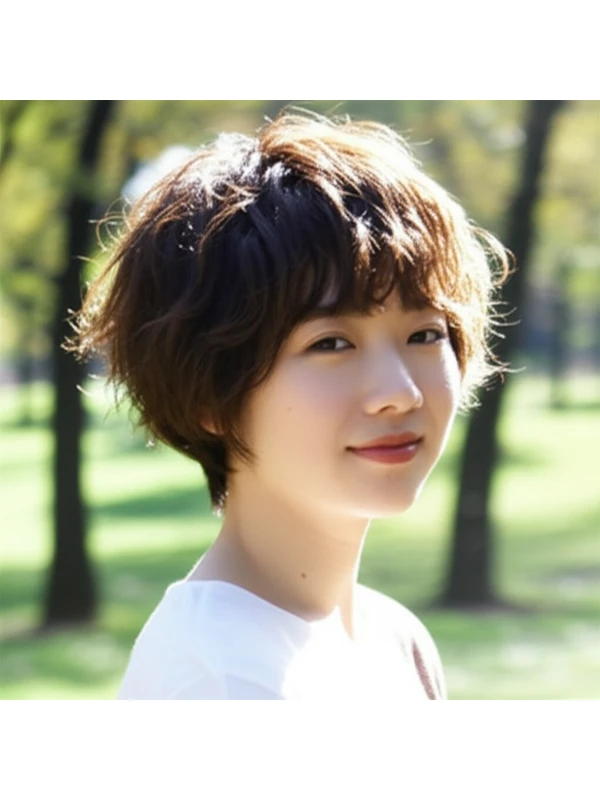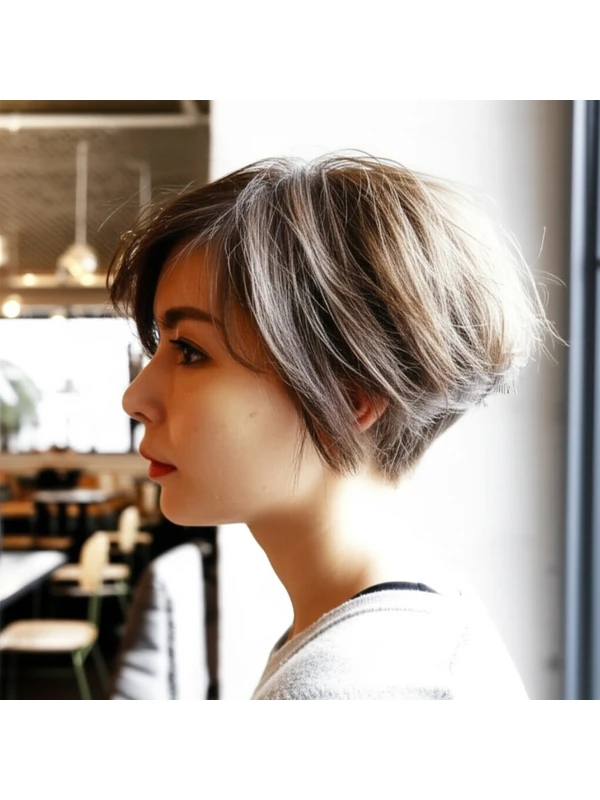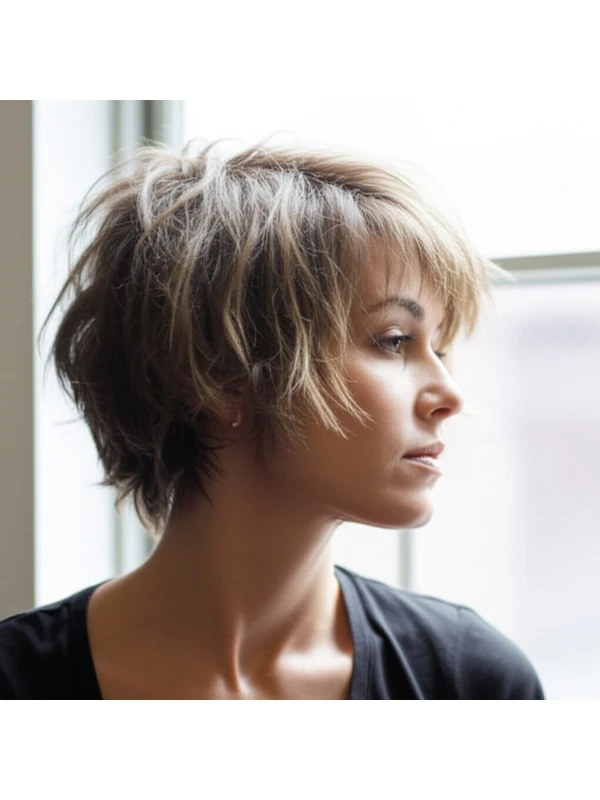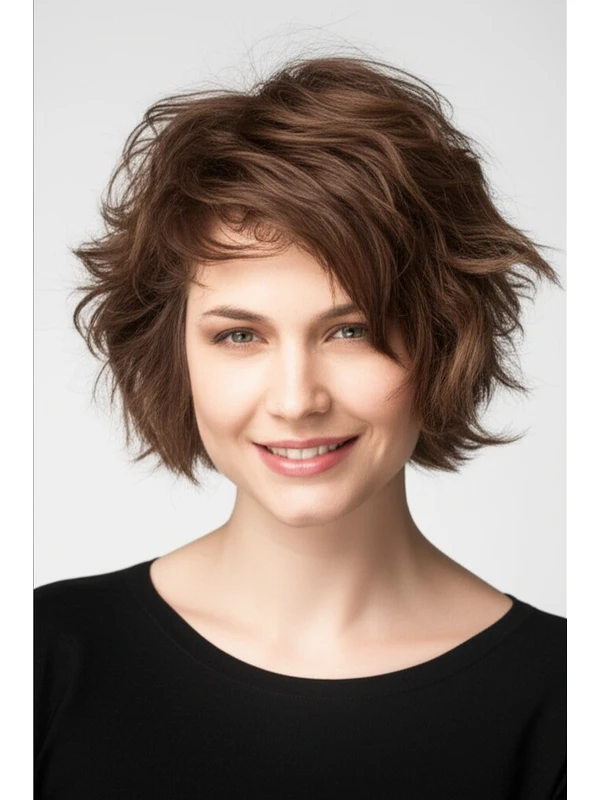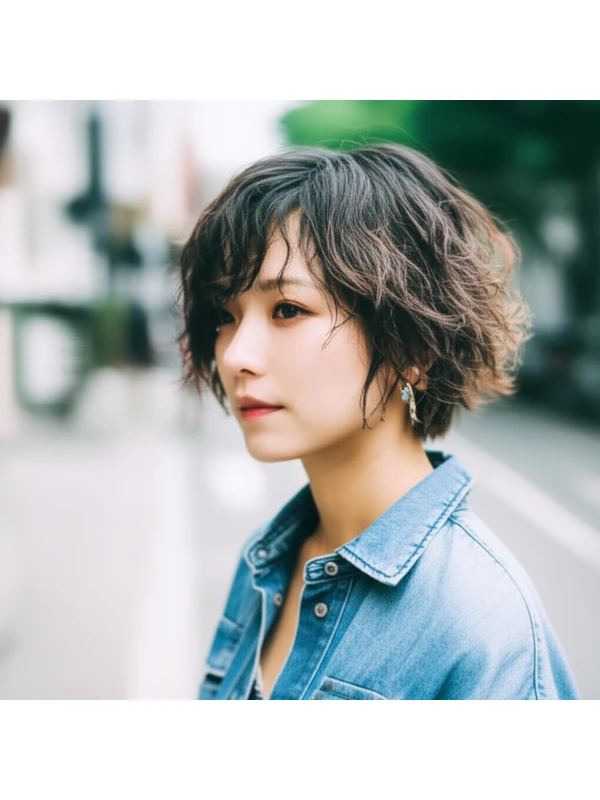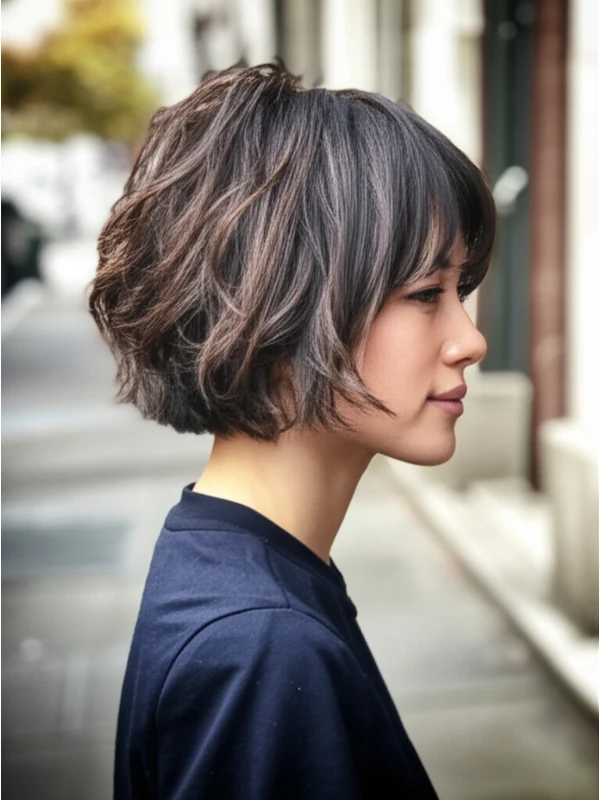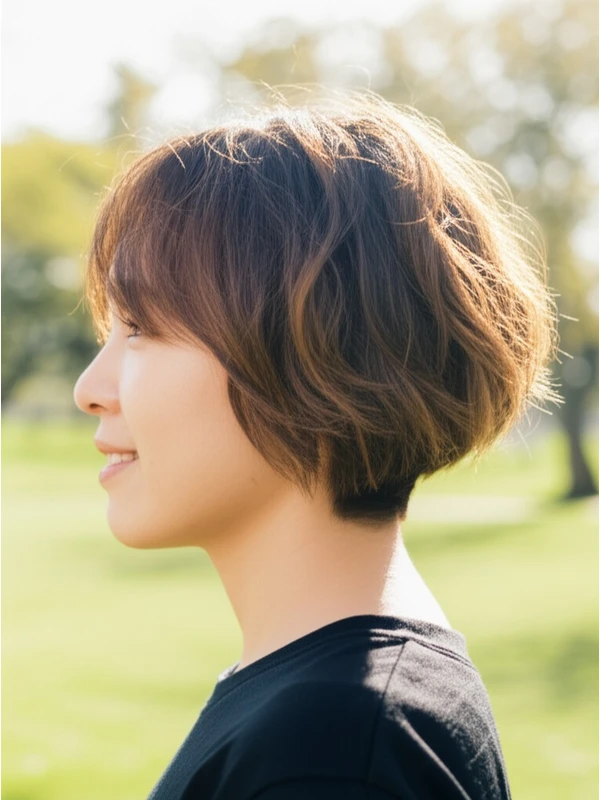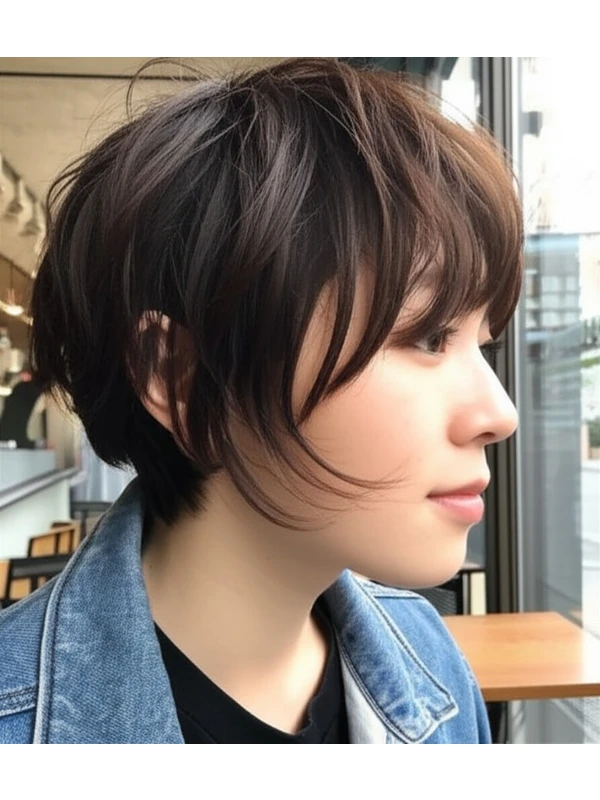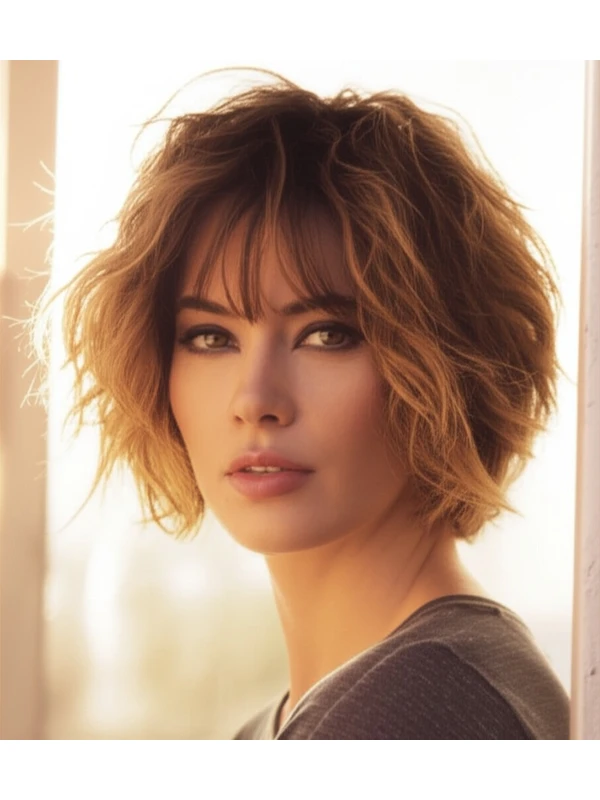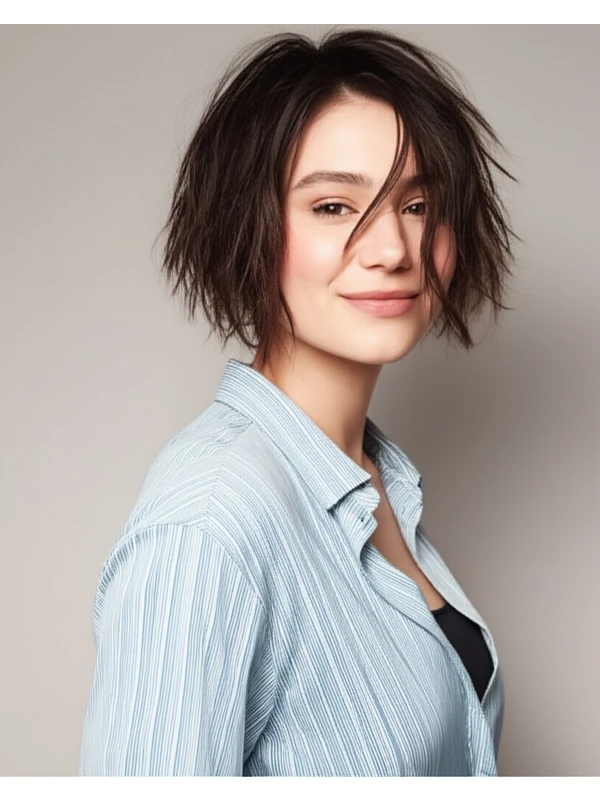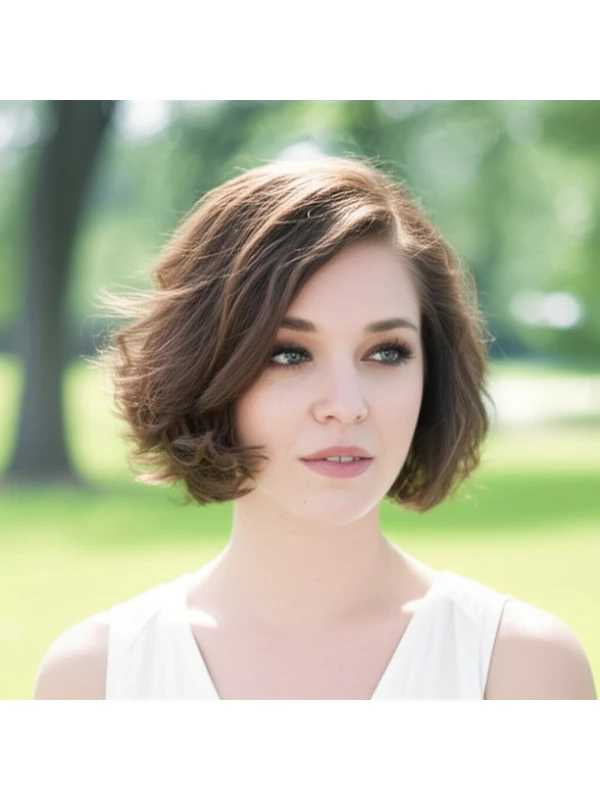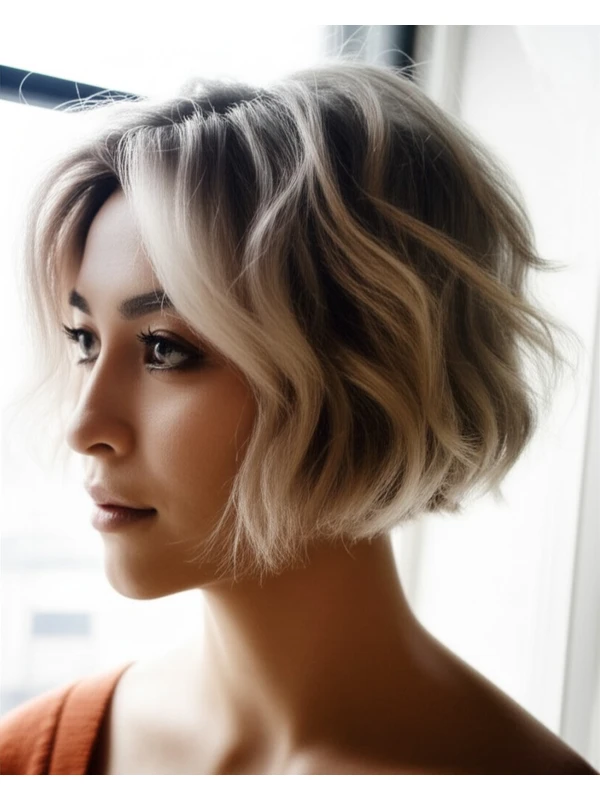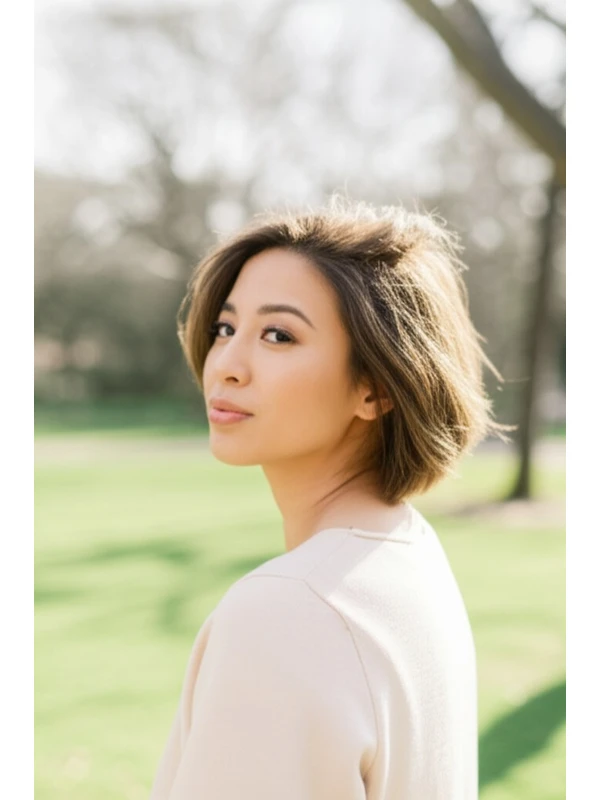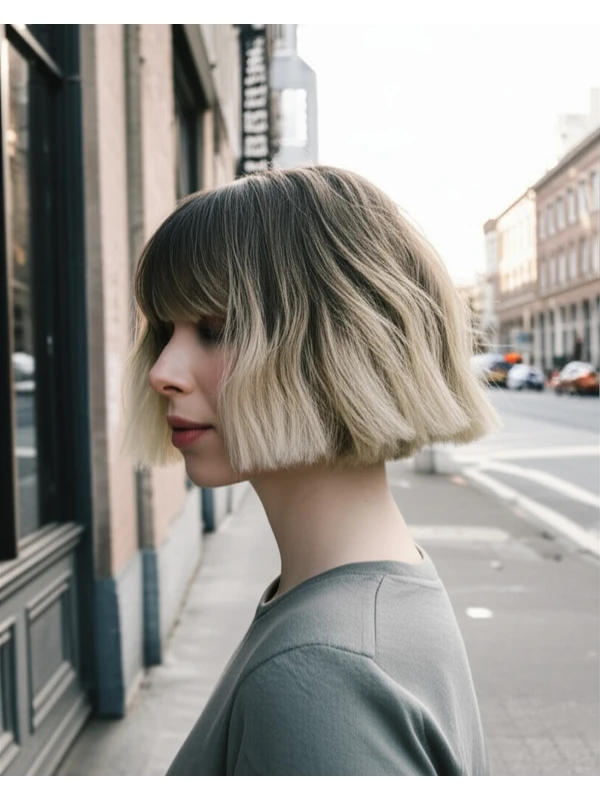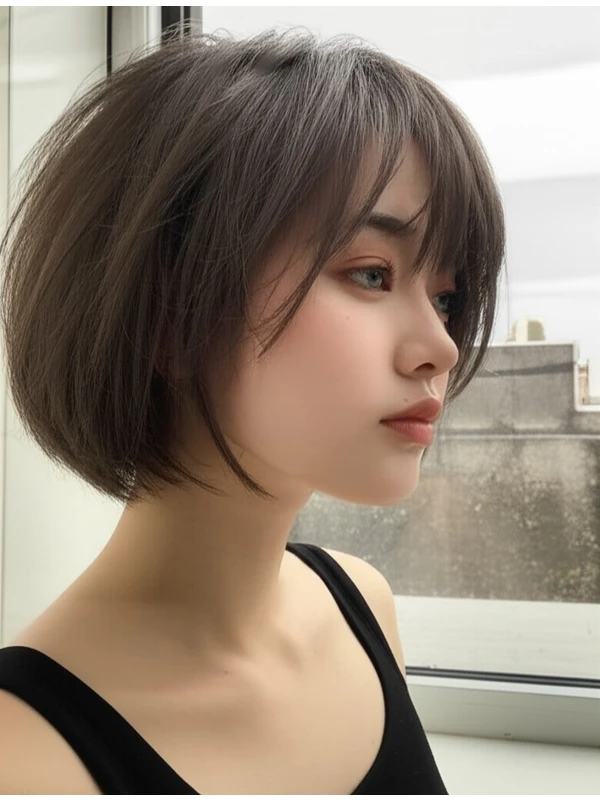#The Shaggy Bob: Effortless Cool for Every You
The shaggy bob is having a major moment – and for good reason! It’s effortlessly cool, adaptable to almost any face shape and hair type, and offers a fresh take on the classic bob. But what exactly makes a shaggy bob a shaggy bob? Let's dive in.
#1) Background & Definition: What is a Shaggy Bob?
The shaggy bob isn’t just any short haircut; it's defined by its texture and movement. Think of it as a classic bob with layers that create volume, softness, and a slightly undone feel. It’s all about those wispy ends!
Key Features:
- Layered Throughout: The defining feature is the layering – shorter pieces are cut throughout the hair to remove weight and add texture.
- Choppy Ends: The ends aren't blunt; they have a deliberately "chopped" or feathered look, contributing to that shaggy vibe.
- Face-Framing Layers: These layers typically start around the cheekbones or chin, softening features and adding dimension.
- Volume at the Crown: The layering lifts hair away from the head for natural volume.
Typical Length Ranges:
Generally falls between chin length to just below the shoulders (lob territory). Shorter shaggy bobs feel more edgy; longer ones are softer and more versatile.
Alternative Names:
You might hear it called a "textured bob," a “layered bob,” or even an “effortless bob.” They're all variations of this core style.
#2) Face Shape Fit: Finding Your Perfect Shaggy Bob
The beauty of the shaggy bob is its adaptability, but understanding how it interacts with your face shape will help you achieve the most flattering result.
- Oval: Lucky you! The shaggy bob generally looks fantastic on oval faces as it complements their balanced proportions. A full fringe can add extra personality.
- Round: Shaggy layers create vertical lines, which visually slim a round face. Avoid blunt cuts that accentuate width. Side-swept bangs are your friend – they break up the roundness. A slightly longer length (closer to a lob) works well.
- Square: Soften those angles! The shaggy bob's layers diffuse the sharpness of a square jawline and forehead. A textured fringe can further soften features.
- Heart: The volume at the crown balances a wider forehead, while face-framing layers draw attention to your cheekbones. Avoid too much height if you have a very pointed chin – keep it balanced with length below the chin.
- Diamond: The shaggy bob’s layering softens diamond shapes by adding width around the jawline and softening the angles of the forehead and chin. A fringe can help balance out a strong brow line.
- Oblong (Long): The layers add width, making your face appear wider and shorter. Avoid styles that are too long or sleek as they will elongate the face further. Curtain bangs or a more substantial fringe can also soften an oblong face.
#3) Body Proportions & Height Guidance: Silhouette Harmony
Beyond just your face shape, consider how the shaggy bob will impact your overall silhouette.
- Petite: A shorter, chin-length shaggy bob adds visual volume and prevents a petite frame from looking overwhelmed.
- Average Height: Most lengths work well! Experiment with different fringe options to personalize the look.
- Tall: A longer shaggy bob (lob) can help balance height. Too much volume on top might accentuate tallness, so consider a slightly more streamlined style.
- Narrow Shoulders: Layers add visual width at the shoulders, creating a more balanced appearance.
- Broad Shoulders: Avoid excessive layering directly at the shoulder line as this can emphasize width. Focus layers upwards and towards the face.
- Short Neck: A shorter shaggy bob (chin-length or slightly above) is generally best to avoid emphasizing a short neck.
#4) Works Best With Hair Types & Densities: Finding Your Shag Sweet Spot
The versatility of this cut shines when considering hair type and density.
- Straight Hair: Layers really pop on straight hair, creating defined texture. Use texturizing products for added definition.
- Wavy Hair: The shaggy bob enhances natural waves! Layers prevent the hair from looking triangular or weighed down. Air-drying is often a great option.
- Curly/Coily Hair: This cut can work beautifully, but communication with your stylist is key! Layering helps remove bulk and define curl patterns. Shrinkage matters: Account for shrinkage when determining length – what looks like a lob in the salon might be shoulder-length once dry.
- Fine Hair: Layers create the illusion of volume. Avoid too many layers, which can make fine hair look even thinner. Root-lifting products are your friend!
- Medium Hair: The shaggy bob is generally flattering for medium density hair – it provides enough structure to showcase the layers.
- Thick Hair: Layers are essential to remove weight and create movement. Ask your stylist about "razor cutting" techniques, which can further soften ends.
#5) Styling Variations: From Casual Cool to Evening Chic
The shaggy bob is a chameleon! Here’s how to tweak it for different looks.
- Sleek vs Textured: Use smoothing serums and a flat iron for a sleek look; embrace air-drying or sea salt spray for texture.
- Middle vs Side Part: A middle part creates symmetry, while a side part adds softness and volume.
- Fringe Variations: Curtain bangs are trendy and flattering on many face shapes. A blunt fringe offers edginess, while wispy bangs soften features.
- Occasion Styling:
- Casual: Air-dry with texturizing spray.
- Office: Sleeked back or styled with a side part for a polished look.
- Evening: Add waves with a curling iron, and finish with hairspray for hold.
#6) Maintenance: Keeping Your Shag Sharp
Regular trims are key to maintaining the shape of your shaggy bob.
- Trim Cadence: Every 6-8 weeks is typical.
- At-Home Routine: Gentle shampooing, moisturizing conditioner, and a leave-in treatment are essential.
- Heat vs Air Dry: Air drying enhances natural texture; heat styling allows for more controlled looks. Use heat protectant if using hot tools!
- Product Checklist:
- Shampoo & Conditioner (suited to your hair type)
- Leave-in Conditioner (for moisture and detangling)
- Texturizing Spray or Sea Salt Spray (for added texture)
- Styling Cream or Pomade (to define layers)
- Hairspray (for hold)
- Estimated Daily Styling Time: 5–15 minutes, depending on desired style.
#7) Grow-Out Roadmap: Evolving Your Look
The shaggy bob doesn’t just disappear as it grows; it transforms!
- Months 1-3: The layers remain distinct and the shape is at its most defined.
- Months 3-6: Layers start to blend, creating a softer look. You might need a trim to maintain face-framing layers.
- Maintaining Shape: Ask your stylist for "dusting" trims – small snips to remove split ends and preserve the overall shape without significantly altering length.
#8) Color Pairings: Enhancing Dimension & Shine
Color can elevate a shaggy bob from good to amazing.
- Cool Undertones (ash blonde, cool brown): These shades enhance the coolness of the layered texture.
- Warm Undertones (golden blonde, caramel brown): These create warmth and dimension.
- Low-Commitment Options: Balayage or babylights add subtle highlights without a drastic color change. Face-framing money pieces are also a fun way to brighten up the style!
#9) Season & Occasion Guide: Styling for Every Moment
- Spring/Summer: Embrace air-drying and lighter products for effortless texture.
- Fall/Winter: Add warmth with richer color tones, and use smoothing serums to combat frizz.
- Work: Sleeked back or styled with a side part.
- Weddings: Soft waves and romantic styling.
- Parties: Embrace the texture! Use texturizing products for added volume and movement.
#10) Cost & Time: Salon Investment
- Salon Time: Expect anywhere from 45 minutes to 2 hours, depending on hair length, density, and desired complexity.
- Estimated Price Range: Expect to pay a moderate-to-high price for this style – it requires skill and precision.
#11) Pros & Cons: The Trade-offs
Pros:
- Versatile styling options
- Flattering on many face shapes and hair types
- Creates volume and movement
- Relatively low maintenance (with regular trims)
Cons:
- Requires regular trims to maintain shape.
- Can be time-consuming to style if you desire a very specific look.
- Can accentuate fine or thin hair if not styled correctly
#12) Salon Consultation Script: Your Voice, Their Expertise
Here are some prompts for your consultation:
- "I love the shaggy bob look! I'm interested in trying it, but I’m concerned about [specific concern – e.g., my round face, fine hair]."
- “Can you show me examples of shaggy bobs that would work well with my [face shape/hair type]?”
- "I want a low-maintenance style. What length and layering would be best for easy styling?"
- “I’m not comfortable with a lot of layers, can we create a softer version?”
#FAQs: Your Burning Questions Answered
- Can I get a shaggy bob if my hair is very thick? Absolutely! Layers are essential to remove weight and create movement in thicker hair.
- Will this style make my face look wider? It depends on the length, layering, and fringe. A stylist can customize the cut to balance your features.
- How long will it take me to get used to a shorter haircut? It takes time for any new hairstyle to feel natural! Be patient with yourself and experiment with different styling techniques.
- Can I style this myself, or do I need professional help? With practice, you can definitely style the shaggy bob at home. However, a stylist's expertise is invaluable for achieving the initial shape and layers correctly.
- What if I don’t want bangs with my shaggy bob? No problem! The layered texture still creates movement and dimension without a fringe.
- Is this style suitable for older women? Absolutely! A softer, longer shaggy bob (lob) is particularly flattering as we age, softening features and adding volume where it's needed.
